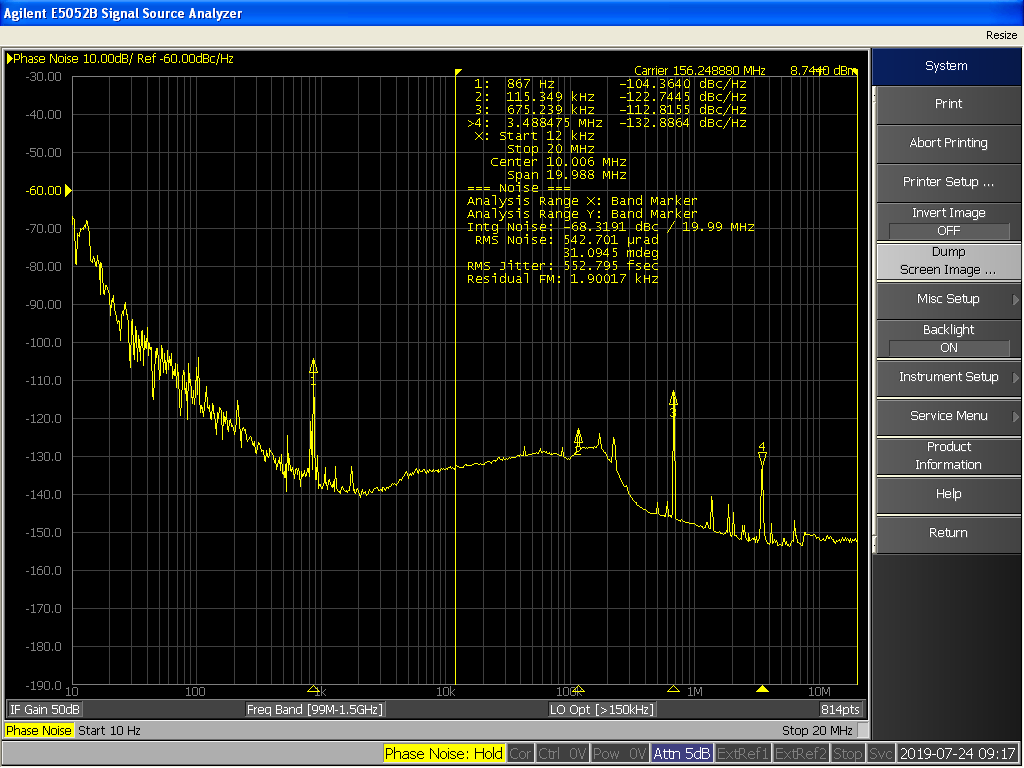Contents

Source: Wikipedia
Understanding Phase Noise in Lasers
Introduction to Phase Noise
Phase noise is a fundamental characteristic of laser systems, affecting the precision and stability of their output. It is a byproduct of quantum noise and technical disturbances, resulting in fluctuations in the optical phase of a laser’s light output. This phenomenon is critical in applications requiring high precision, such as telecommunications, spectroscopy, and metrology.
Origins of Phase Noise
Phase noise primarily originates from quantum noise, particularly the spontaneous emission within the gain medium of the laser. Additional contributions come from optical losses and technical noise sources such as mechanical vibrations and temperature variations within the laser components. These disturbances can couple with intensity noise through nonlinear effects, further complicating the phase noise profile.
Quantum Noise
Quantum noise is inherent to all laser systems due to the stochastic nature of photon emission and absorption processes. Spontaneous emission events within the laser cavity introduce phase fluctuations, setting a fundamental limit on the laser’s coherence.
Technical Noise
Technical noise arises from external factors such as mechanical vibrations, thermal fluctuations, and electrical noise in the laser system. These factors can induce phase shifts by altering the optical path length or refractive index of the laser medium.
Quantifying Phase Noise
Phase noise is characterized by its power spectral density (PSD), which quantifies the phase deviations over frequency. The PSD is typically expressed in units of rad²/Hz. Analyzing the PSD helps in understanding the noise characteristics and determining the laser’s linewidth, coherence time, and coherence length.
Relationship with Frequency Noise
Phase noise is closely related to frequency noise, as the instantaneous frequency is the derivative of the phase. Understanding this relationship is crucial for accurately modeling and mitigating noise in laser systems.
Measuring Optical Phase Noise
Accurate measurement of optical phase noise is essential for optimizing laser performance. One common technique involves recording a beat note between two lasers using a fast photodiode. Alternatively, self-heterodyne methods utilize a delayed portion of the same laser output to measure phase noise.
Optical Phase Noise vs. Timing Jitter
While phase noise pertains to fluctuations in the optical phase, timing jitter refers to variations in pulse timing in mode-locked lasers. Both phenomena are interrelated, but they affect laser performance differently. Understanding their distinction is crucial for applications requiring precise timing and phase stability.
Comparing Phase Noise in Different Oscillators
When evaluating phase noise across different oscillators, it is beneficial to normalize the noise to the oscillator’s frequency. This allows for a fair comparison, highlighting the relative stability of various systems. Lasers, especially those stabilized to optical frequency standards, often exhibit lower normalized phase noise compared to microwave oscillators.
Conclusion
Phase noise is a critical parameter in laser systems, influencing their performance and application suitability. By understanding its origins, measurement techniques, and impact on laser operation, researchers and engineers can better design and optimize laser systems for high-precision applications.
This blog post provides a comprehensive overview of phase noise in lasers, detailing its origins, quantification, and measurement techniques. It distinguishes between optical phase noise and timing jitter, offering insights into their implications for various applications.

Source: YouTube
Feel free to comment your thoughts.



